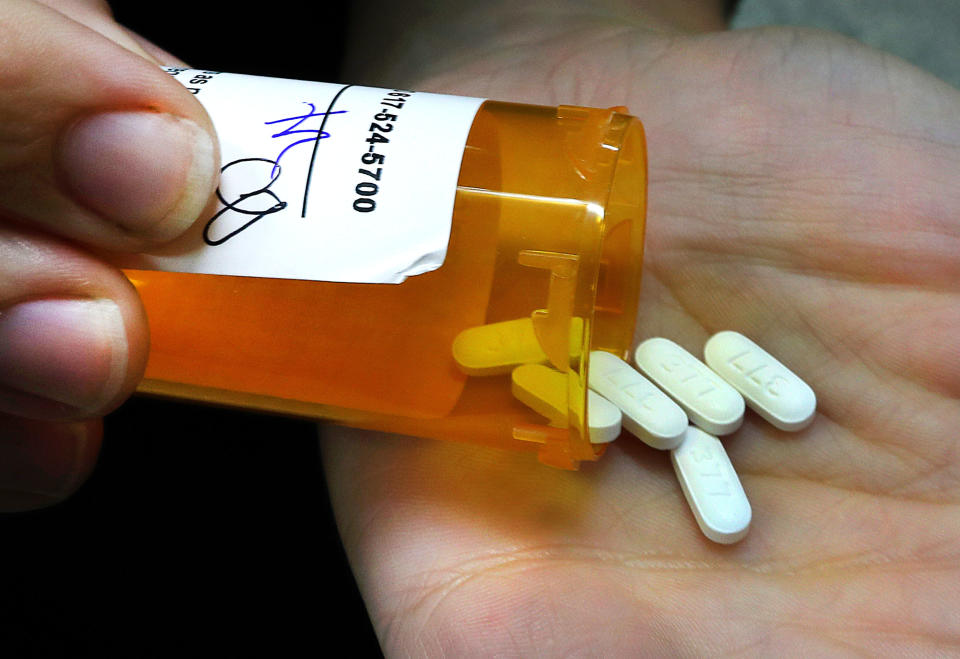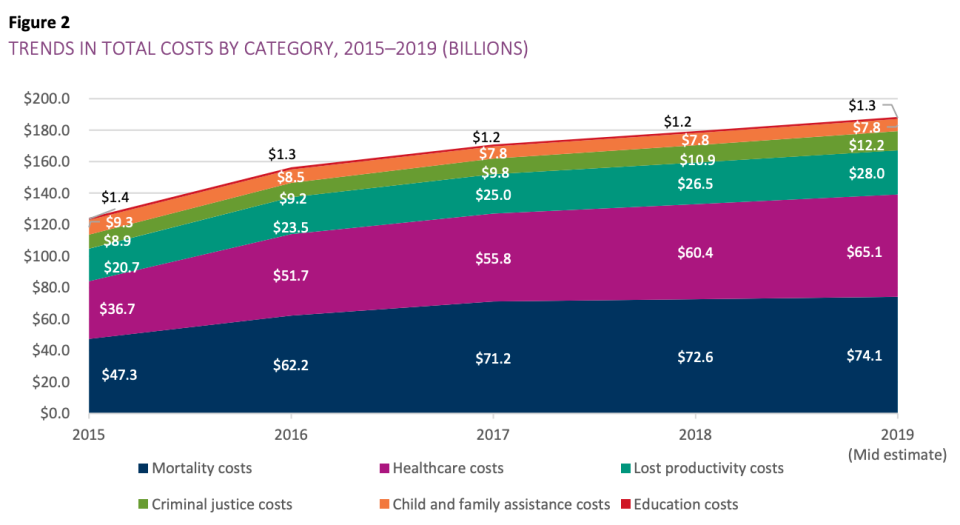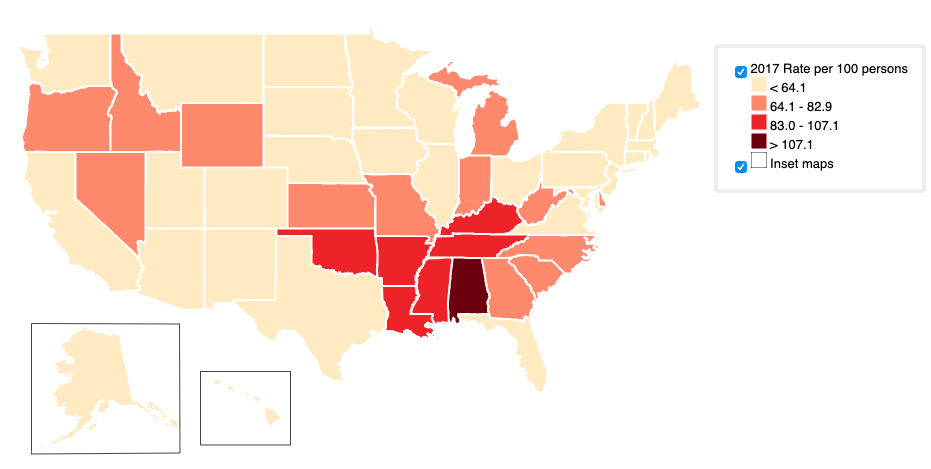The U.S. opioid crisis will cost $800 billion over last five years, study says
The estimated cost to the U.S. economy from non-medical use of opioids will be more than $819 billion from 2015 through 2019, according to an analysis from the Society of Actuaries (SOA), with the projected cost for 2019 at around $188 billion.
To put that into perspective: The estimated cost of weather and climate disasters was about $150 billion per year for 2016 to 2018. (Non-medical opioid use refers to both prescription misuse and illicit use.)
Nearly one-third of the opioid crisis cost is attributed to health care spending related to opioids. This includes treatment for those with substance use issues, infants born with neonatal abstinence syndrome or neonatal withdrawal syndrome, and for family members of those with opioid use disorder.
Joel Segel, assistant professor of health policy and administration at Penn State University, noted the numbers are “certainly high” for a five-year period.
“The costs are really high, in part because treatment costs are high,” he told Yahoo Finance. “There’s an increasing number of people that require treatment, and certainly a lot of the medical care that surrounds the opioid crisis is really high. It seems like costs will continue, at least until we get a better handle on treatment and prevention.”

Dale Hall, managing director of research for the SOA, stated that much of the health care costs are derived from Medicare. In 2015, the economic impact of non-medical opioid use on Medicare was $10.5 billion. That number surged to $23.1 billion in 2018 and is projected to be approximately $25.4 billion for 2019.
“The trend in Medicare is probably the biggest across that four- or five-year period we’re looking at,” he told Yahoo Finance. “Clearly, some of these costs are from just the uninsured population, others from the Medicaid population. The two dominant sources are from commercial carriers who are covering the cost for people with opioid use disorder and from the Medicare system.”
An overwhelming majority of the cost is from premature mortality (40%). This is derived from lost lifetime earnings from those who died due to drug overdoses involving opioids. Between 2015 through 2019, premature mortality will cost the U.S. economy an estimated $327 billion.
“A large part of this is that we have a large number of people that are addicted to opioids and to some extent, it’s a pernicion addiction in the sense that we know certain types of treatment do work,” Segel said. “I think states and federal governments have been doing a number of things to try to stem the tide of it, but certainly a lot of this is already baked into the cake. While there are people cycling in and out of treatment, it’s an ongoing problem.”
‘It sort of hits you at all different points’

Lost productivity is another issue, costing an estimated $124 billion. This includes missing work, reduced labor force participation, incarceration for opioid-related crimes, and workers’ compensation benefits for employers with opioid use disorder.
A study from the Cleveland Fed earlier this year argued that prescription opioids account for 44% of the national decrease in men’s labor force participation between 2001 and 2015, and a 17% decline for prime age women. This tracks with a 2018 chart from Deutsche Bank’s Torsten Slok that showed the opioid crisis was contributing to decreased labor force participation, particularly in states like West Virginia, Alabama, Mississippi, and Arkansas.

About 6% of the cost is from criminal justice activities, such as correctional facility costs, police protection, and legal costs, adding up to a whopping $51 billion. And another $41 billion went towards costs for government-funded child and family assistance programs. The SOA analysis has noted the correlation between criminal justice costs increasing with the presence of illicit opioids like heroin and fentanyl.
Synthetic opioid overdose deaths, particularly from fentanyl, have risen exponentially since 1999. Just within the span of a year, the rate jumped 45% in 2017, making fentanyl and other synthetic opioids as the deadliest drugs in America.

Segel also remarked how part of these costs are because treatments don’t always work right away.
“We know relapse rates are certainly an important part of the treatment continuum,” he said. “In some ways, it sort of hits you all the different points in the health care system, which is that there are issues about ensuring access to care and high costs of care, especially when it comes to treatment.
“It can also be difficult in the sense that some of the non-opioid ways to deal with pain may require multiple physical therapy visits or things that would require people to miss a lot of time or go to a number of doctor’s visits — when it may have been more appealing, at least in the short run to take a pill rather than do some of these other things,” Segel said. “Especially when the full information about the downstream consequences weren’t as well-known.”
Adriana is an associate editor for Yahoo Finance. Follow her on Twitter @adrianambells.
READ MORE:
Follow Yahoo Finance on Twitter, Facebook, Instagram, Flipboard, SmartNews, LinkedIn, YouTube, and reddit.